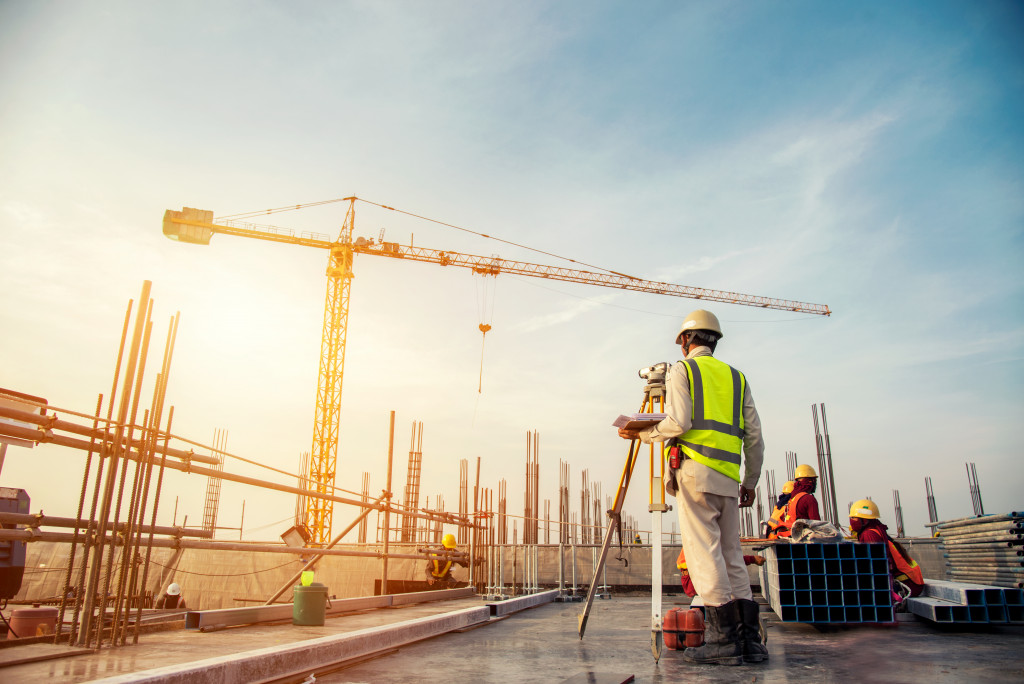- Safety training for construction workers should cover properly using power tools, protective gear, and identifying/reporting hazardous conditions.
- Implementing an effective safety management program involves assessing worksite conditions, developing written safety plans, and educating workers on identified risks.
- Fall protection systems, such as safety harnesses, anchor points, and safety nets, can protect workers while working at heights.
- Regularly inspecting construction sites and monitoring weather forecasts are essential to identifying and mitigating potential safety hazards.
Construction sites have various risks and hazards that can cause serious injury or death. That is why construction companies must ensure their sites’ health and safety by implementing appropriate measures. By doing these things, construction companies can help protect their employees from harm while reducing potential liabilities associated with accidents. This article will discuss effectively implementing health and safety protocols in a construction site environment.
Implement proper safety protocols.
Implementing proper safety protocols is essential to protect construction workers from potential hazards. Here are some tips for doing this:
Utilize personal protective equipment (PPE).
Utilizing personal protective equipment (PPE) in construction sites is important to keeping employees safe. This can include high-visibility clothing, helmets, goggles, and gloves to protect workers from physical hazards found on the job site.
Additionally, investing in durable Gore-Tex jackets offers additional protection from extreme weather conditions that could put a worker at risk of injury. Acquiring top-quality PPE will make the job site safer for everyone by ensuring proper safety equipment is always used. Doing so will help minimize potential accidents and ensure everyone on the job site can do their best work without fear of harm or injury.
Provide safety training to construction workers.
Safety training for construction workers is an essential part of any construction site to ensure health and safety practices are being adhered to. It should include a variety of topics, from instruction on the proper use of power tools and protective gear to teaching workers how to identify and report hazardous conditions.
This training should be comprehensive, providing a thorough update on current legislation, regulations, and industry best practices. Keeping safety training current will demonstrate that managers are committed to reducing or eliminating any risks or hazardous conditions on the job site and show their dedication to protecting workers’ safety and compliance with relevant laws.
Develop and implement an effective safety management program.
An effective safety management program is vital for ensuring health and safety in construction sites. This program is designed to break the cycle of dangerous conditions, unsafe behavior, and costs associated with accidents by empowering employees to take charge of their safety and identify any potential hazards.
To properly create and implement such a program, a detailed assessment of worksite conditions must be conducted. This includes inspection of equipment, facilities, personnel, environmental factors like air and noise quality, and determining if sufficient precautions to mitigate risks are in place. Afterward, an adequate written safety plan should be developed that incorporates safety training protocols and other preventive measures, then all workers should be educated on the identified risks and procedures.
Use fall protection systems when working at heights.

Fall protection systems help workers protect themselves while they work at heights that could potentially be dangerous. It comprises safety harnesses, anchor points on building structures or pre-installed guard rails, and sometimes safety nets. Stainless steel rope grab systems also play an important role in this system by giving the user extra protection as they work up high.
Proper use of fall protection systems gives construction workers the confidence to do their job without fear for their physical safety. This type of system is a crucial part of worker health and safety, as even one fall accident can lead to devastating consequences for the worker and the entire business. Spending time ensuring employees understand how these systems work and the best practices can be critical when working at heights safely.
Inspect the site regularly for potential hazards.
Regularly inspecting the construction site for potential safety hazards is an important task to ensure those on and around the site remain safe and healthy. These inspections should include checks for working conditions, such as that proper personal protective equipment is used and for hazardous goods storage.
It is also paramount to inspect the structural integrity of the building, such as checking for any spots where someone may fall from a high ceiling. After each inspection, it is necessary to take steps to eliminate any hazardous elements that were identified during the process. Failure to properly inspect a construction site can lead to injury or worse, making regular inspections paramount in protecting health and safety on site.
Monitor weather conditions closely.

Monitoring weather conditions is an important safety practice in any construction site. Handling hazardous materials, working outdoors, and long hours often mean workers at these sites are vulnerable to injury or illness due to environmental factors like extreme temperatures, humidity levels, and storms. Supervisors must pay attention to daily weather forecasts and develop appropriate plans based on the information they receive.
Proper preparation and implementation of measures such as taking regular breaks in shaded areas or stocking sufficient water reserves can differentiate between a job site running smoothly or jeopardizing employees’ safety. Furthermore, supervisors should also consider airborne hazards such as dust particles which may cause respiratory illnesses in workers.
These are just some ways construction companies can ensure health and safety on their sites. By taking preventive actions such as mandating safety protocols, implementing employee training initiatives, inspecting the worksite regularly, and monitoring weather conditions closely, construction sites can become havens of security where workers feel protected while performing their duties.





